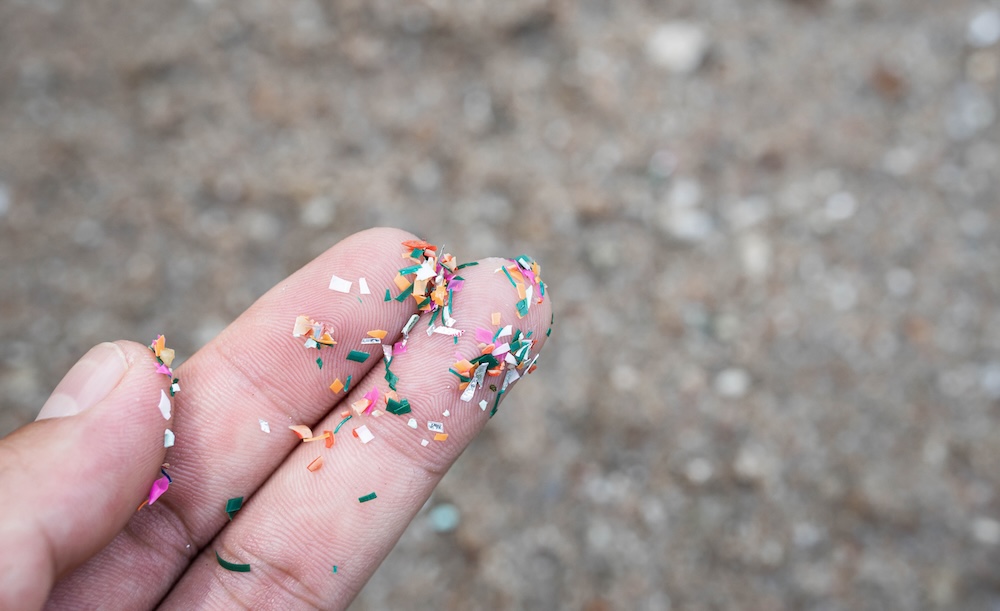Microplastics—tiny fragments of plastic less than 5 mm across—are pervasive throughout our environment. From drinking water to the air we breathe, these particles have wormed their way into nearly every aspect of modern life. While eliminating them entirely isn’t feasible, there are practical steps you can take to reduce your exposure and protect both your health and the planet.
This guide will help you understand what microplastics are, where they hide, the potential health impacts, and actionable ways to limit them in daily life.
What Are Microplastics?
Microplastics are small plastic particles—either primary (manufactured small, like microbeads in exfoliants) or secondary (broken down from larger items). They often carry harmful contaminants such as BPA, phthalates, and PFAS, which can mimic hormones and contribute to serious health issues. Microplastics have been detected in air, water, soil, food, and even human tissues, including blood, lungs, liver, and brain.
Where Do We Find Them?
- Synthetic textiles: Polyester, nylon, acrylic—garments release microfibers in washing and daily wear
- Food & drink: Bottled water, seafood, salt, sugar, canned and packaged goods
- Air & household dust: Microplastics blown indoors from synthetic carpets, curtains, and general dust
- Kitchenware & utensils: Non-stick cookware, plastic cutting boards, takeout containers
- Packaging and storage: Plastic food containers, plastic wrap, and plastic-capped glass bottles
Why You Should Care
Microplastics can:
- Cross biological barriers and accumulate in organs like the brain—potentially contributing to inflammation, dementia, reproductive issues, liver damage, and cardiovascular disease
- Carry toxic chemicals that mimic hormones and disrupt normal functions
- Accumulate in the environment, entering food chains and wildlife, reducing biodiversity and ecosystem health
How to Cut Down Your Exposure
Here are proven strategies—ranging from simple swaps to lifestyle adjustments:
1. Choose Natural Fibers
Opt for clothing made from organic cotton, hemp, or linen. If you must wear synthetics, use microfiber laundry bags or machine filters to trap fibers.
2. Revamp Your Kitchen
Replace plastic cookware and utensils with cast iron, ceramic, stainless steel, glass, or wooden alternatives. Never heat food in plastic or plastic-lined containers. Swap plastic wrap for beeswax wraps or reusable silicone lids.
3. Ditch Plastic Bottles
Use glass or stainless steel reusable bottles. Avoid bottled water and opt for filtered tap water instead.
4. Shop Mindfully
Buy unpackaged produce, refill household staples, and avoid single-use packaging. Choose items packaged in glass, metal, or cardboard.
5. Clean Smarter
Vacuum regularly with a HEPA-filtered vacuum to reduce indoor dust loaded with microplastic fibers.
6. Improve Indoor Air & Water
Use air purifiers with HEPA filters and carbon filters to capture airborne microplastics. For drinking water, install point-of-use filters with fine pores.
7. Opt for Sustainable Oral Care
Switch to bamboo toothbrushes and floss made of silk or wax rather than plastic.
8. Avoid Microparticle Products
Skip body care items labeled “exfoliating beads” or microbeads. Use natural alternatives like sugar or oatmeal scrubs.
9. Slow Down and Think Long-Term
Replace plastic items gradually. Choose durable, low-plastic items and support brands with reusable, refillable systems.
FAQs About Microplastic Exposure
Is it possible to avoid microplastics entirely?
No—they’re nearly impossible to avoid—but reducing exposure through everyday decisions helps significantly.
Can air purifiers remove microplastics?
Yes—HEPA and activated-carbon filters can trap airborne particles, including microplastics.
Should I stop microwaving food in plastic?
Absolutely. Heat promotes plastic leaching and microfiber release—stick to glass or ceramic.
Are synthetic clothes still safe?
They’re useful but shed fibers. Use laundry filters and wash less frequently to reduce fiber release.
Will filtering water remove microplastics?
Quality filters can help, especially reverse osmosis or nano-filtration systems. Replace filters regularly.
Final Thoughts: Small Choices, Big Impact
Microplastics are everywhere—but you don’t have to live in fear. Simple lifestyle shifts—like choosing natural fibers, reusable containers, healthy cookware, and mindful cleaning—add up. Every swap helps reduce your personal exposure and signals demand for sustainable products. Over time, individual choices can influence industry and policy to create a cleaner, healthier world.
Your everyday decisions truly matter. Let’s keep reducing those microscopic plastics—one swap at a time.









Reader Interactions